- Home
- Ian Buruma
Year Zero Page 7
Year Zero Read online
Page 7
The British had encountered starvation on this scale only once before, in Bengal in 1943, when a combination of floods, bad crops, government incompetence, corruption, wartime disruption, and shocking official callousness caused the death of up to three million people. British army doctors, drawing on recent research, used something called the Bengal Famine Mixture, a saccharine gruel of sugar, dried milk, flour, and water. Aside from that, they experimented with nasal drips and injections of amino acids. The Bengal Famine Mixture, for those who could still swallow, and amino acid drips for those who couldn’t, were tried at Belsen as well. Both methods failed. The mixture was too sweet. People couldn’t keep it down. Injections and dripping techniques had to be abandoned because death camp survivors were terrified of anything resembling a medical experiment. Convinced they were going to die, they whimpered in concentration camp German, “Nix crematorium.”3
That many survived was due to the extraordinary efforts of British doctors and medical students, as well as doctors who had survived the camps themselves. Through much trial and error, they found the right combinations of food and fluids to nurse people back to life. One of the survivor doctors was Hadassah Bimko, a Polish dentist. Still at Belsen, she married Josef “Yossele” Rosensaft, a tough Polish Jew who had escaped from several transports to Auschwitz and became one of the main Zionist leaders in the camp. We will hear more about him later. Their son, Menachem, was born in Belsen.
• • •
LIFE IN BRITAIN WAS BETTER than in Holland, Italy, Poland, Yugoslavia, or Germany, but it was far from plush. Wartime rations of food in Britain were actually cut in May 1945: less cooking fat, less bacon, and in the following year even bread was rationed. Many people continued to sleep in the tunnels of the London Underground. And heating was so sparse even a year later that the winter of ’46/47 was known as “Shiver with Shinwell,” after Emanuel Shinwell, minister of fuel and power, and “Starve with Strachey,” after John Strachey, minister of food.
The American literary critic Edmund Wilson, on a visit to London in the summer of 1945, went for a walk through the London borough of Holborn with a friend and was struck by a foul smell. Looking around, he saw “a little market, on the shelves of whose open windows were laid out rows and rows of dead crows. That was apparently all they sold in that shop.”4
In December, the arrival in Bristol of a ship carrying bananas and oranges (as well as four Jamaican stowaways, who jumped overboard) was met by an official welcoming committee led by the city mayor. These were the first bananas seen in Britain since the beginning of the war.
It wasn’t just the lack of decent food that made London seem depressed just months after the victory celebrations. Edmund Wilson put the general British attitude in his own words: “How empty, how sickish, how senseless everything suddenly seems the moment the war is over! We are left flat with the impoverished and humiliated life that the drive against the enemy kept our minds off. Where our efforts have all gone towards destruction, we have been able to build nothing to fall back on amidst our own ruin.”5
France was even more demoralized. The minister of supply, Paul Ramadier, was known as Ramadan, after the Muslim month of fasting, and the meagre daily rations as Ramadiète.6 French farmers refused to sell at fixed prices, since they got rich off the ubiquitous black markets, without which it was impossible for most French people to live in any kind of comfort. Stephen Spender, the poet, spent a few months in France on a break from Germany, where he was writing a report for the British government on the state of culture. In terms of morale, he observed one important difference between Britain and France. In Britain it had always been possible to be fed and clothed without turning to the black market. In France, where Spender did not exactly move among the poor, he kept meeting people like the Sorbonne professor “whose suit was twice too large for him” and who had to explain “with a wry smile that he had been living for two months without recourse to the Black Market.”7
But at least in France most of the country was still physically intact: the great historic cities, the churches and cathedrals. In Spender’s eyes, fresh from the wreckage of Germany, this made everything seem even spookier. France, he wrote, was an “invisible ruin.” Like Germany, France had to be “reconstructed from zero,” but “although the sense of this pervades the atmosphere, meanwhile the walls stand, the cafés are crowded (although there is no coffee) and there is always the Black Market.”8
Since the economy had been systematically bled dry by the Germans, the black market had already been operating in France for some years. The main problem, after Liberation, was not just the lack of food, but the difficulty in getting food from the countryside to the hungry cities. Trucks and gasoline were very scarce. Whoever had access to these essential means of transport could become exceedingly rich very quickly. Enterprising U.S. soldiers, some with criminal records back home, deserted from the army and organized gangs in Paris. The scam was to steal army trucks and stock up on gas by forging documents or bribing men at the army petrol-oil-lubricants (POL) depots. These supplies were then sold to French gangsters. Huge fortunes were made, but many of the American racketeers were caught by their own conspicuous consumption. Money transfers to the U.S. would have given them away, so they lived like kings in Paris, which alerted the authorities. To live like a king in continental Europe was to operate in the semi-criminal world of black market restaurants and nightclubs, where champagne and fine wines still flowed, and all manner of delicacies were on offer.
From London, Edmund Wilson flew to Rome, which looked to him “more fetid and corrupt than ever.”9 He had dinner at an outside table of a black market restaurant with friends from America. Wilson did not notice it at first, engrossed as he was in his food and conversation, but a crowd had gathered behind them “reaching to grab things from our plates.” Then a bouncer appeared who knocked down an old woman and drove back the crowd, mostly women and children, “some of whom disappeared, while others, keeping their distance, stood and stared at the diners.”10
Rome, like Paris, was still physically more or less in one piece. Cities like Palermo and Naples were not. Milan, too, had been badly scarred by Allied bombs and civil war. To Wilson, who visited Milan in May, it “looked like a slice of Hell. Some of the shabby green trams were running and some of the inhabitants were going about their routines, but the whole place seemed stunned and stopped, and the bloodless undernourished people, dressed in any old cloth that could protect their skins, seemed to have been fixed . . . in a condition of permanent strain.”11
Sándor Márai, the Hungarian novelist, was living in Budapest during the days of liberation. The badly damaged city had been under siege from Soviet troops for more than two months. Liberation by the Red Army in February 1945 was followed by crippling inflation. A dollar or a piece of gold would be worth billions more overnight. Peasants, “who knew their time had come,” became rich “by trading a water-bloated, fattened pig for a piano, for Napoleon gold pieces on the market in Pest,” while “intellectuals, workers and civil servants waited every day, more pale, more hungry and more hopelessly . . .” During those months of inflation, Márai recalled, “most Budapest inhabitants became as skeletally thin as the sketches of the human structure found in anatomy books, without any flesh and fat.”12
Compared to Berlin and most other German cities, however, even Budapest was still in better shape. For all that was left of Berlin, Frankfurt, Hamburg, Bremen, Dresden, and even smaller cities and towns such as Würzburg or Pforzheim, destroyed in 1945 as a kind of afterthought, were smoldering piles of rubble, still reeking of death. The first thing that struck many visitors in the early months after the war was the eerie silence.
Standing in the center of Berlin, between the ruins of the Romanisches Café, once the most fashionable café in Weimar period Berlin, and the gutted Kaiser Wilhelm Memorial Church, the playwright Carl Zuckmayer recalled that same spot before the war: the incessant din of t
raffic and car horns, and chattering crowds shopping, drinking, and dining. Now he felt as if he were alone amidst the silent ruins. He heard a soft scraping sound. A thin young boy, in wooden sandals, was dragging a small handcart through the debris of a cobbled street. The wind blew softly through the desolated landscape, and Zuckmayer could hear the sound of his own heart beating.
And yet, he writes, “there was at the same time, in the whole of Germany, a constant sensation of crawling, scratching, groping, like a gigantic ant hill, . . . a ceaseless coming and going, wandering, walking, crossing; the scuffing and grating of millions of shoes. This is the ‘Black Market’ . . . The world and the march of the homeless, the refugees, the scattered masses, the marauding bands of youths.”13
Here is Stephen Spender on the German city of Cologne, another urban wreck: “The ruin of the city is reflected in the internal ruin of its inhabitants who, instead of being lives that can form a scar over the city’s wounds, are parasites sucking at a dead carcass, digging among the ruins for hidden food, doing business at their black market near the cathedral—the commerce of destruction instead of production.”14
If Cologne, or Berlin, were bad, Tokyo or Osaka, let alone Hiroshima, was probably worse still. Not to mention Manila, Warsaw, Stalingrad, and other cities laid to waste by the Axis Powers. The chief Orthodox rabbi of England, Dr. Solomon Schonfeld, told reporters about his trip to Warsaw in December. The entire former ghetto of Warsaw, he said, “is literally one vast wilderness of bricks and debris. The streets are as they were on the last day of extermination. Thousands of bodies lie underneath a sea of brick and human bones, some of which I personally picked up.”15
Destroying the Jewish ghetto of Warsaw was part of a vast criminal enterprise. The motives for bombing Japanese cities were different, but the resulting devastation was not. Japanese dwellings had been largely constructed of wood. The massive area bombings, followed by rapidly spreading firestorms, had left virtually nothing, apart from a few stone chimneys of public bathhouses, which still stood out pathetically in the charred debris. Japan, too, was marked by silence. Sherwood R. Moran, a U.S. Navy lieutenant, wrote a letter to his friend Donald Keene, later to become a great scholar of Japanese literature: “Tokyo, the first war casualty I’ve seen, is a devastated, immodest mess, but the silence is what gets me most; no honks, yells, clangs—none of the stuff you hate in a town but come to expect. For Tokyo, for all of Japan I suppose, the calamity is past, but everybody is still staring in that god-awful silence.”16
The prospect of famine, and pandemics, was quite real in the defeated nations. There were already outbreaks of typhoid, typhus, and tuberculosis in German cities. In Japan, more than twenty thousand people died of dysentery in 1945, and by 1948, almost seven hundred thousand had been infected by typhoid, typhus, tuberculosis, cholera, and polio.17 Life was a little better in rural areas, where food could still be found. But urban conditions were probably worse than in Germany. Germans who were prepared to work received food ration cards. A report from Berlin in Yank, the magazine for U.S. armed forces, described the typical daily menu for the family of a manual worker with six children: a cup of tea and a slice of black bread each for breakfast, and a potato soup for dinner made from one onion, one potato, and half a pint of milk, garnished with a tiny bit of cauliflower. Inadequate, to be sure, but enough to stay alive.
The Japanese had already been starving well before the war was over. Government authorities were advising people how to prepare meals from acorns, grain husks, sawdust (for pancakes), snails, grasshoppers, and rats. When soldiers began to return in large numbers after the defeat, a bad situation turned into a crisis. Many of the homeless lived in the underground passages of railway stations, like the narrow, mazelike slums in Victorian London. This Dickensian world included orphaned children collecting cigarette butts to exchange for something edible, or picking pockets, or selling their ill-nourished bodies. Tokyo’s Ueno Station was especially notorious as a kind of urban beehive full of the homeless. The bands of hungry children were called “charin kids” (charinko), charin being the sound of clinking coins.18 In photographs of these tough little creatures, dressed in rags, dragging on cigarette butts, they look less human than feral. Which is just how a British soldier described their counterparts in Germany, huddling in ruined underpasses, or railway stations, “perfectly camouflaged in filth, so you could not tell they were there.” They would scurry away at the sight of a foreign soldier, only to reemerge carrying stones or iron bars, “and their teeth were black and broken,” the only clean spots on their bodies being “the whites of their eyes,” the eyes of diseased leopard cubs “whose one enemy was man.”19
To keep this in some perspective, we should also remember what it was like for countless millions of Chinese surviving in the ruins of a devastating war. American soldiers in areas controlled by General Chiang Kai-shek’s Nationalists were shocked to see children sneaking into their barracks to pick through the garbage cans for food. One U.S. sergeant recalled how “mothers with young girls came up to our guard stations to offer these little girls of theirs and trade them for candy bars and cigarettes.”20 Meanwhile, Chinese men would crawl under army latrines to catch human excrement through cracks in the floor, which they could peddle to the farmers as fertilizer.
The scale of human misery in the aftermath of the war was so vast, and so widespread, that comparisons are almost useless. Germany had to contend not only with its own citizens and returning soldiers, but also with more than ten million German-speaking refugees from Czechoslovakia, Poland, and Romania who had been expelled from their native lands with the official approval of the Allied governments. Many refugees died, or were killed on their way to Germany, a country many of them had never seen before. Almost all had lost everything they ever possessed. This added huge numbers of people to the drifting masses in search of food and shelter.
Compounding the food crisis in Japan, as well as in Germany, was a terrible harvest in 1945. Agriculture had been damaged badly by the war, with depleted livestock, ruined fields, wrecked machinery, and a shortage of manpower, as well as a spell of appalling weather. In Germany, much of the farm machinery in the Eastern zones had been destroyed, or looted, in the last months of the war. And the foreign farm workers, who had replaced Germans during the war, were leaving. Japan, which once relied on food supplies from its Asian empire, was now cut off.
In October, the Japanese minister of finance told American reporters that without immediate food imports, ten million Japanese might starve to death in the coming winter. Equally catastrophic predictions were made in Germany. A social democratic administrator in Lower Saxony stated that “now one can calculate when the German people will starve if its former enemies do not come to its aid.”21 Reports of the imminent collapse in Germany were discussed in the British Parliament. Arthur Salter, a United Nations relief official, gave a stern warning that “if, as is now thought, millions during this winter freeze and starve, this will not have been the inevitable consequence of material destruction and world shortages of material.” Members in the House of Commons were warned of the “greatest catastrophe the human race ever experienced.”22
This proved to be exaggerated. Some travelers in Germany found that conditions, especially in the Western zones, were no worse than in many other western European countries and were actually somewhat better than in places farther east. But even with some leftover stockpiles of food looted from occupied countries, life in Germany was bad enough. Berlin was especially dismal, and accounts from other parts of Germany were dire as well. An American reporter observed the following scene near Hamburg: “One evening, in a marshy plot of land, an elderly German in a business suit takes his cane and clubs a duck to death. More will be said about the food situation, but that in essence is it.”23
All this was distressing, of course, but while the former victims of Nazi Germany were still starving in places like Bergen-Belsen, and prisoners of the Japa
nese languished in POW camps, while millions of refugees and DPs needed to be repatriated, and British, Dutch, French, Poles, and Italians were surviving off meager rations, and Filipinos, Chinese, and Indonesians lived on even less, and while citizens of the Soviet Union still had very fresh memories of being systematically starved by the German army and the SS, public sympathy for Germans and Japanese was somewhat limited. It was difficult enough convincing U.S. congressmen, especially on the more isolationist Republican side, to fund international relief organizations, such as UNRRA (United Nations Relief and Rehabilitation Administration), to help the victims of German and Japanese aggression. The idea of spending more tax dollars, or, as was suggested, cutting British rations, to feed the former enemies, was not an easy policy to promote.
Yet something had to be done, for practical if not for moral reasons. A total breakdown in Germany and Japan would put an intolerable strain on the Allied governments and make any kind of orderly, let alone democratic, reconstruction of the postwar order impossible. The British Daily Mirror, a pro–Labour Party newspaper widely read by soldiers, put the case for relief under the succinct headline: “Feed the Brutes?” The paper made it clear that it was not necessary to act out of sympathy for the German people, or even for the destitute German refugees driven out of their homelands. No, it “was not any feeling of compassion which prompts us to emphasize the necessity of dealing with the situation.” The problem was this: “The longer Europe is allowed to sink into the bog, the longer it will take to raise up—the longer the occupation will have to go on.”24

 A Japanese Mirror
A Japanese Mirror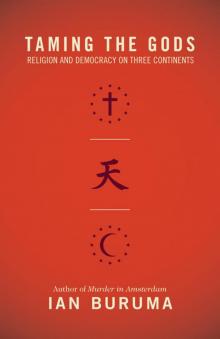 Taming the Gods
Taming the Gods The China Lover
The China Lover A Tokyo Romance
A Tokyo Romance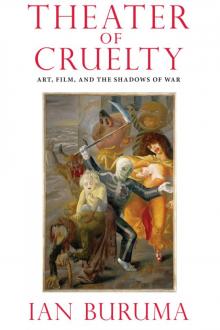 Theater of Cruelty
Theater of Cruelty Year Zero
Year Zero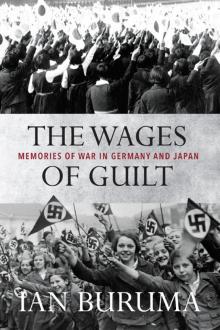 The Wages of Guilt
The Wages of Guilt Murder in Amsterdam
Murder in Amsterdam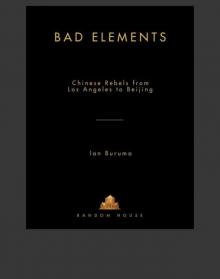 Bad Elements
Bad Elements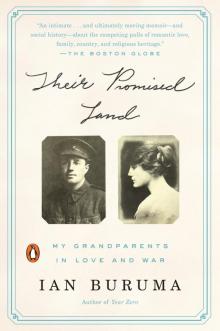 Their Promised Land
Their Promised Land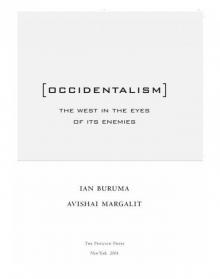 Occidentalism
Occidentalism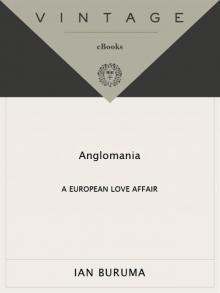 Anglomania
Anglomania Inventing Japan: 1853-1964 (Modern Library Chronicles)
Inventing Japan: 1853-1964 (Modern Library Chronicles) The Missionary and the Libertine
The Missionary and the Libertine